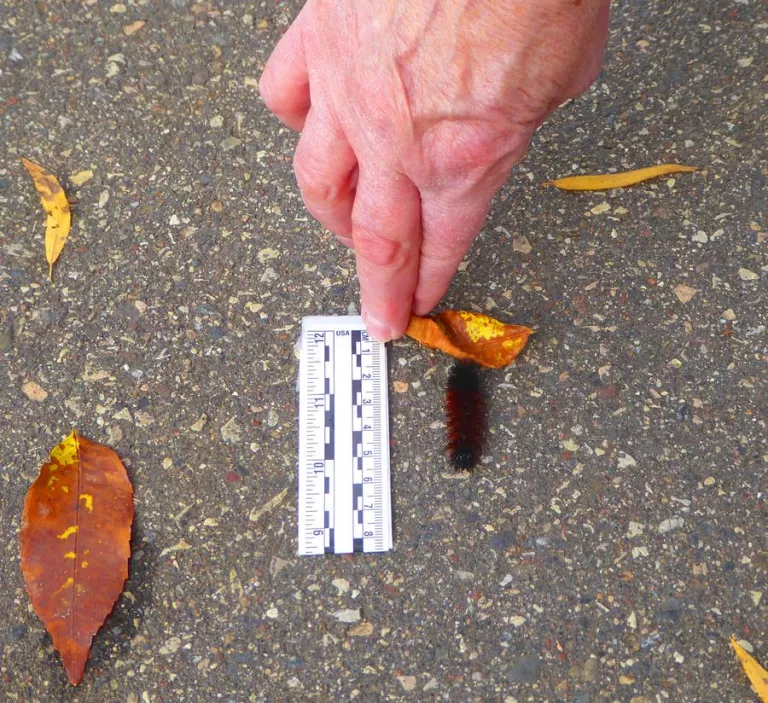Bob Suchanek
Water and Wetlands Steward

Photo Credit: Bob Suchanek
Signs of Change
Things around Central Park are changing these days. New “thin ice” signs have been installed on the shore all around the lake and almost all of the leaves have changed color and fallen. The rows of sun-bathing turtles have abandoned their logs, the ospreys are on their way south and most insects seem to have disappeared. Besides all this it’s getting cold and snow is in the forecast.
On the Path to winter
Most of the paths around the waters and wetlands in our park are paved with asphalt, making them suitable for use by every critter present and all modes of motion. We’re always alert to traffic on the paths, partly due to an interest in self-preservation (avoiding fast moving bicycles) but also a wish to keep from stomping on the many non-human low-speed travelers.
One of the low-speed travelers that we carefully stepped around was my favorite fall season caterpillar, the banded woolly bear. This fuzzy looking black and red insect on its determined crawl triggered an “ah ha” realization that the immediacy of winter meant many cold blooded critters were preparing for their long winter naps.
A True Hibernator
Cold winters have led to winter coping adaptations unique to every species. They’re all making suitable arrangements for the new season. The “snow birds” in my apartment building and the ospreys by the lakes are leaving for the sunny warmth down south but that isn’t an option for many Minnesota residents, including the woolly bear.
The late fall banded woolly bear caterpillar that we saw was an immature member of this year’s second generation of the Isabella tiger moth looking for a cozy place to nap under leaves, grass or a rock where it will stay until spring. Unlike many hibernating animals that are active periodically during the winter it’s a true hibernator that won’t be waking up until spring. Being an animal that can’t produce much in the way of body heat under the best of circumstances, it must accept being frozen with a kind of organic antifreeze called glycerol protecting the interior of its cells. Woolly bears have been found completely frozen in a block of ice and thawed back to animated life!
Spring Metamorphosis
The story of this insect’s amazing overwintering ability is followed, after thawing, by equally amazing changes from larval caterpillar to encased pupa and reformation as an adult moth. The adult is a pollinator, feeding on flower nectar and helping to propagate plant species in much of North America. Now that I know a little of their amazing story I’m excited about looking for fully grown tiger moths next year after the snow disappears.
Some Sources